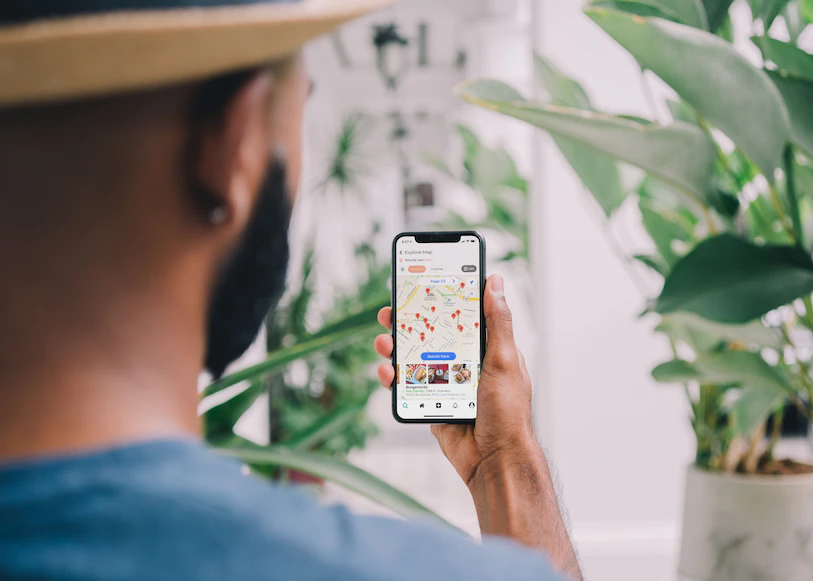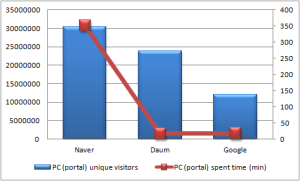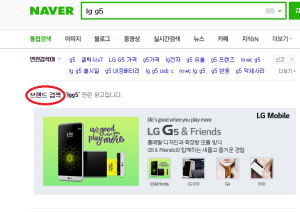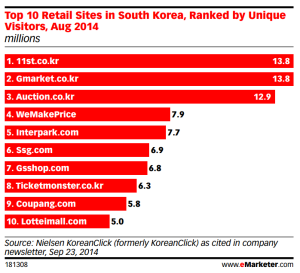What is Naver maps & Kakao maps?
Naver maps is an online application launched as a subsidiary company by the Naver corporation in the early 2000’s. Naver acts as the main search engine used in South Korea, which results in the use of Naver maps almost equaling that of the 42 million users of the Naver search engine. Kakao maps was launched in the early 2010’s by the Kakao corporation. Kakao is one of the largest companies within South Korea and is the creator of Korea’s no.1 messaging application, ‘KakaoTalk’. In recent years both of these companies’ map services have come to rival each other, as although they work similarly, there is an ongoing domestic debate as to which application provides better map services.
Those visiting Korea for the first time will be surprised to discover that the western application of ‘Google Maps’ is obsolete in South Korea, with Koreas own corporations Naver and Kakao providing more accurate maps to its users instead. Unlike a lot of countries, South Korea’s urban landscape constantly evolves- resulting in map applications needing to match this speed. As finding addresses and attractions in Seoul especially can be very challenging, being able to effectively use Korea’s main map apps is essential to foreigners spending time in South Korea. To help with this, both apps provide their services in Korean and English but only Naver Maps currently offers its map services in Chinese and Japanese too.

Naver Maps App
Naver maps is one of Naver’s most popular subsidiaries that provides in-depth maps to consumers. The app focuses on user accessibility and unlike Kakao maps, is able to be optimized for simplicity of travel. Naver maps is also focuses on promoting offline businesses through their apps search functions; which helps business owners and customers alike to favor Naver maps for discovering new places.
Each location selected on the map is accompanied by a range of review phrases for app users to vote on. This creates a summary of a location which is quickly identifiable to users of multiple languages. Despite the selection of different language options being available through Naver and Kakao maps, it is noted that much of the app is still not able to be translated from Korean. The use of emojis instead of translating words to review a location is becoming a more efficient way for rating offline businesses simply that works well for the app.

Naver Blogs:
Naver blogs is its own separate website and app outside of Naver maps. As blog posts shared on Naver blogs have viral success, their ability to effortlessly review and advertise quickly became a staple feature of the Naver maps app too. For every location highlighted on Naver maps, users are assured that previous reviews and opinions about an area have been shared via Naver blogs. This use of unsolicited reviews on Naver adds to the overall user experience and results in consumers not just using the app for maps, but instead to create a digital chart of previously enjoyed or must-see locations across Korea; which also benefits the tourism industry.
Naver Nearby:
In addition to providing in depth reviews of locations, the app also shows users nearby locations that they can explore. This is a great feature for the app to have as it increases both offline and online engagement for business and customers. For every public location selected, users see locations nearby that connects them to other interests, such as fun activities or café/restaurants to check out. This feature in particular is also resulting in being a great feature of tourists planning a trip around one condensed location.
Kakao Maps App
The Kakao Maps app is used widely across South Korea for its domestic digital maps and features for navigation. Kakao maps shows clear directions to suit a variety of user needs such as taking into account real time traffic conditions and direct routes. In addition to this, Kakao maps lets users decide from a range of transportation options such as train, bus, car, airport bus and walking. Users easily compare travel modes in Korean or English by using the tags at the top of the screen, shown here:
Despite the success of KakaoTalk having thirteen language options available, Kakao maps is currently only available in Korean and English. Kakao maps is also updated sporadically throughout the year, with some forms of the map being updated only once a year. A benefit of using Kakao maps though, is that users compare street views of desired locations through all of the recorded photos. This is helping both locals and tourists navigate and compare the ever-changing Korean cities easily. Unlike Kakao maps, Naver is better for this feature of the app as the street view tool is consistently updated on average every two months, making this a reliable feature for people not used to Korea’s urban landscape. The Kakao maps app also links to a host of the Kakao corporations’ subsidiaries such as:
Kakao Metro:
The Kakao Metro app can be used as a separate app or as part of Kakao maps, it provides maps of the underground for Seoul, Busan, Daegu, Gwangju and Daejeon. On Kakao metro enables users create journeys simply on Korea’s underground metro systems- providing clear information about time-tables, ticket costs and direct routes. This app is specifically designed to aid people commuting on Seoul’s subway system. Both the dedicated app and feature on Kakao maps shows users a live feed of the metro system so that people can be informed about any delays or closures they need to be aware of for their desired journeys.
The Kakao metro feature is separated from its competitors by being able to link with Kakao Talk to enable unique features. For example, by creating and actively taking a journey via Kakao metro users can share an accurate arrival time to other users of Kakao Talk. This is just one of the many features the Kakao corporation has considered when adapting their products to improve the lives and user experience for their customers.
Kakao reviews:
On the Kakao maps app, all locations selected by users are accompanied with a detailed file which is created by both statistics and user input to create in-depth reviews for a location. Clicking on any public location in Korea provides users with an insight into the demographic, price, facilities and current opening hours of the location. In addition to this, Kakao maps is surprisingly also linked to Naver’s blog review website ‘Naver blogs’. This provides users with other people’s real experiences at a location, despite Kakao having their own reviewal package, ‘Kakao Story’.
Naver Maps vs Kakao Maps
In terms of accessibility of use for foreigners, both map apps do have their own appeals depending on the individuals’ needs. If someone is new to discovering all that South Korea has to offer, Naver and all of its subsidiaries offer clear and easy to use services in a variety of languages. For example, Naver maps offers a clearer map of airport transportation than Kakao maps- which can be crucial when planning a trip. Both apps are excelling in trip planning though, as unlike many countries map apps, both Naver and Kakao maps is encouraging users to ‘save’ and ‘favorite’ their desired locations or travel routes. This results in many online articles stating that people travelling to Korea for the first time should potentially download both apps for easy navigation of the country.
What could the future of these two apps look like?
Both Naver and Kakao’s apps really listen to what their users needs in daily life are before creating app features. This concept is what separates these apps from not only each other, but also from their overseas competitors. Their emphasis on user experience also explains why websites such as Google Maps have become obsolete in tech focused countries like South Korea. Whether Naver maps or Kakao maps will become the only app used for map services in South Korea will depend on how they are able to adapt in the future. The current concept both corporations have of observing their users needs and creating functions for them has been proving unbeatable in many of these corporations subsidiaries, and is only predicted to evolve further.
Through this blog post, we have explored how Naver Maps and Kakao Maps continue to rival each other with their functions and developments globally. We hope that from the information provided in this article that you will have a greater understanding of these app’s capabilities and impact onto the daily lives and travel of South Koreans.
How to use Naver Map and KakaoMap apps in English:









5 Responses